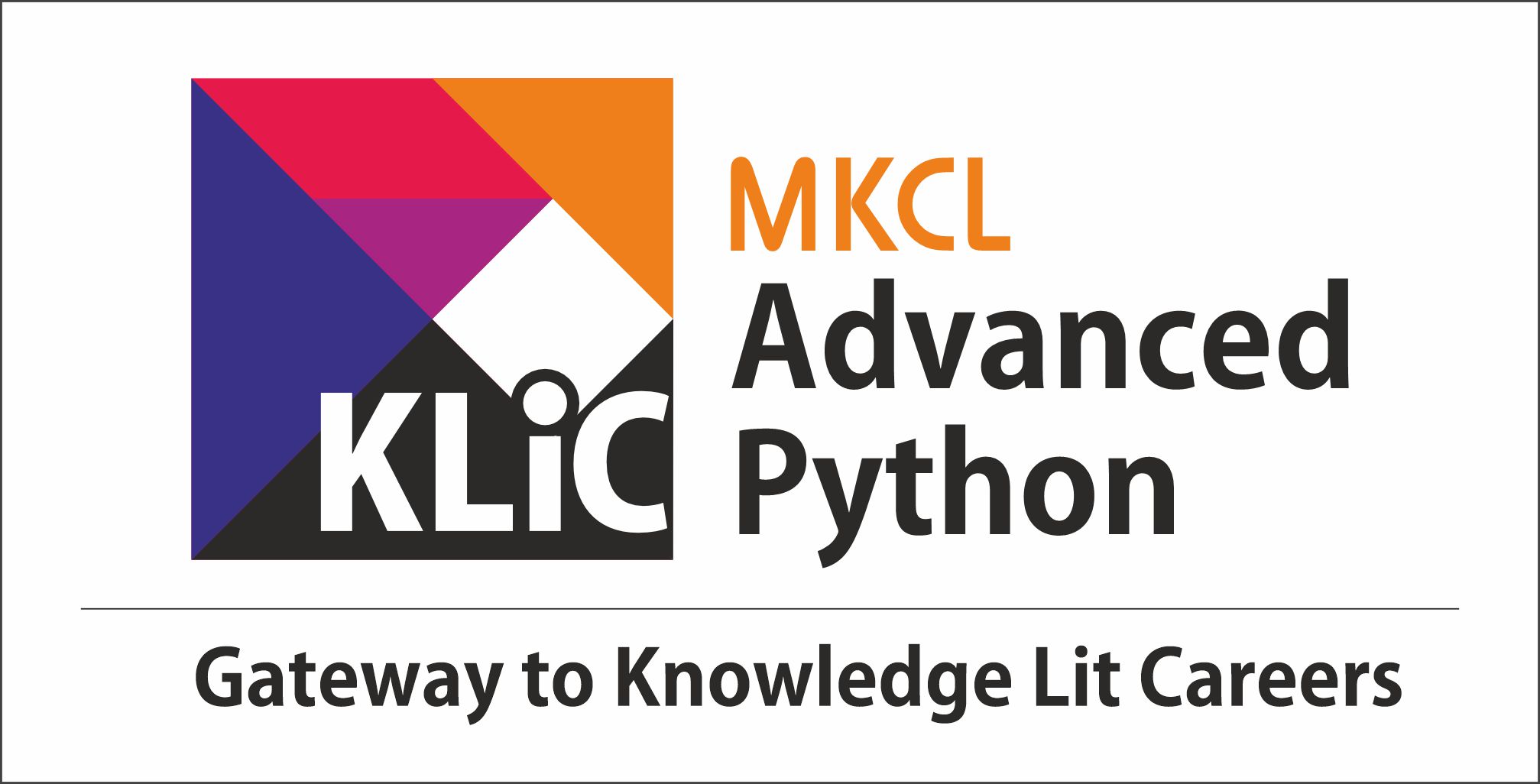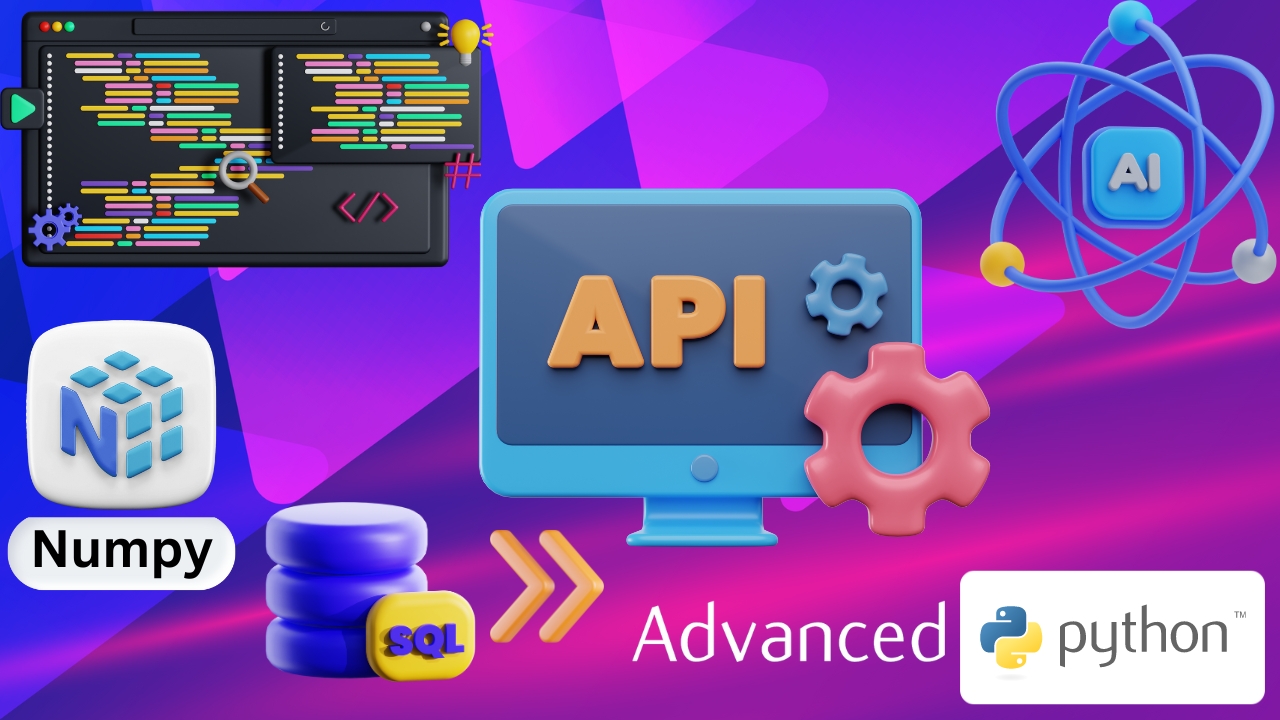- Examining of data science principles and applications.
- Operate different tools like Anaconda, Jupyter Notebooks, and PyPI for data science.
- Summerize mathematical concepts, including vectors, matrices, probability, and statistics, to data science tasks.
- Operate efficient numerical operations and data manipulation using Numpy in Python.
- Identify Pandas for effective data manipulation, analysis, and exploration.
- Summarizing aspects of data preprocessing, including handling null values, reshaping data, and conditional selection.
- Assemble meaningful visualizations using Matplotlib for exploratory data analysis.
- Examine real-world case studies and applications in data science, analysing scenarios in companies like J.P. Morgan and Netflix.
- Identify the fundamentals of artificial intelligence, its history, development, and applications.
- Recognize foundational concepts in machine learning, including supervised and unsupervised learning.

Foundations of Data Science and Artificial Intelligence with Python
Learn key concepts in data science and AI using Python for real-world problem solving.
Introduction
What you'll learn ?
- By the end of the course, learners will be able to:
- Build proficiency in data science concepts, tools, and applications.
- Effectively utilize tools like Anaconda, Jupyter Notebooks, and PyPI in real-world data science projects.
- Make use of mathematical concepts in practical data science scenarios, enhancing analytical skills.
- Construct efficient numerical operations and data manipulation tasks using NumPy.
- Examine and Manipulate data effectively using Pandas for insightful decision-making.
- Build data preprocessing techniques to handle null values, reshape data, and perform conditional selections.
- Produce clear and meaningful visualizations using Matplotlib for effective exploratory data analysis.
- Compare real-world case studies and apply data science techniques to address complex business challenges.
- Distinguish the foundations of artificial intelligence and its ethical implications in societal contexts.
- Develop a solid understanding of machine learning fundamentals, preparing for advanced applications and scenarios.
Syllabus
- What is Data Science
- Who is Data Scientist?
- Why Data Science
- Data Science Pipeline
- Data Science Tools
-
- Data Science Tools (Proprietary)
-
- Introduction to Python Tools for Data Science
-
- Anaconda Installation and Setup
-
- Virtual Environment Setup with Anaconda
-
- What is PYPI?
-
- Installing Packages via Pip
- Jupyter Notebook
-
- What is a Jupyter Notebook
-
- Getting familiar with Jupyter Notebook
-
- Jupyter Magic Commands
- Case Studies
-
- Covid 19 Data Science Application
-
- JP Morgan
-
- Netflix User Case
-
- UPS
-
- Walmart
-
- Future of Data Scientist
- Vector Introduction
- Vector Arithmetic
- Dot and cross product
- Applications of Vectors
- Probability Introduction
- Conditional probability
- Multiplication Rule of probability
- Baye's Theorem
- Statistics Introduction
- Discrete and continuous mathematics
- Set Theory
- Applications of set theory
- Relations and Functions
- Introduction to numpys
- Creating numpy arrays and dimensions
- Indexing
- Numpy Slicing
- Numpy Arithmetic Operations
- Other Numpy Arithmetic Operations
- Broadcasting and comparison
- Solving equation with numpy
- Statistical Operation with numpy
- Numpy Exercises - Part 1
- Numpy Exercises - Part 2
-
- Create and manipulate arrays using numpy
-
- Combining 2 arrays
-
- Compare the elements of the two arrays
-
- Program to print 2d diagonal array.
-
- Flattening a 2d array
-
- numpy.size() function
-
- Non-Zero Functions with numpy
-
- Changing Data Type
-
- Trace of matrix
-
- Addition of two matrix
-
- Subtraction of Two Matrix
- Intro video
- Introduction to pandas
- Data structures in pandas
- Reading files in Csv
- Retrieving data
- Analysing data
- Querying and sorting
- Working with dates
- Grouping and aggregation
- Merging data from multiple sources
- Writing data back to files
- Basic Plotting with Pandas
- Pandas Exercise
-
- How to create a DataFrame from dict of arrays/lists
-
- Creating Dataframe from lists
-
- Creating Dataframe from a list of tuples
-
- Create a list of nested dictionaries
-
- Pandas to create a dataframe
-
- Displays the values of each row and column
-
- How to read data from a string with read_csv()
-
- How to reindex rows using reindex() method
-
- Create two pandas Series using NumPy linspace()
- Preprocess Data
-
- Intro video
-
- Why preprocess
-
- Preprocessing Technique
-
- Null and NaN
-
- Forward Fill
-
- Selecting data with conditionals
-
- Dropping columns/rows
-
- Subset and index data
-
- Reshaping
-
- Pivoting
-
- Rank and sort data
- Matplotlib
-
- Intro video
-
- Introduction to Matplotlib
-
- Linchart
-
- Improving style using seaborn
-
- Scatter plot
-
- Histogram
-
- BarChart
-
- HeatMap
- Intro video
- EDA Introduction
- Data Preparation and Cleaning
- Exploratory Analysis
- Asking and answering questions
- Intro video
- What is Artificial Intelligence?
- History of AI and its Development
- Narrow or Weak AI
- AI Techniques and Algorithms
- Natural Language Processing
- Ethical and Societal Implications
- Relationship between AI and other Technologies
- Robotics and its connection to AI
- Difference between AI and ML
- The Role of AI
- Applications of AI
- Use of AI in Social Media
- Intro video
- Numpy
- Pandas
- Matplotlib
- SciKit-Learn
- Tensorflow
- Keras
- PyTorch
- The Natural Language Toolkit
- XGBoost
- CatBoost
- OpenCV
- Introduction to Machine Learning
-
- Intro video
-
- Introduction of Machine Learning
-
- Supervised Learning
-
- Unsupervised Learning
-
- Reinforcement Learning
-
- Data Preprocessing
-
- Feature Extraction
-
- Training data
-
- Which model to use?
-
- Overfitting / Underfitting
- Mathematical/Statistical Concepts for AI/ML
-
- Intro video
-
- The necessity of Statistics for AI
-
- Vectors and Matrices
-
- Graphs for AIML
-
- Sets for AIML
-
- Probability distribution
-
- Hypothesis testing in AIML
-
- Markov model
-
- Clustering in AIML
-
- Kernel Functions in AIML
-
- Decision Tree
- Intro video
- Introduction to Supervised Learning
- Classification
- Regression
- Naive Bayes
- Linear Regression
- Logistic Regression
- Support Vector Machines (SVMs)
- K Nearest Neighbor
- Supervised Learning Applications
- Challenges in Supervised Learning
- Intro video
- Introduction to Unsupervised Learning
- Clustering in Unsupervised Learning
- Exclusive and Overlapping Clustering
- Hierarchical Clustering
- Probabilistic Clustering
- Association Rule
- Dimensionality Reduction in Unsupervised Learning
- Principal Component Analysis
- Applications of Unsupervised Learning
- Challenges in Unsupervised Learning
- Intro video
- What are Neural Networks
- History
- Types of Neural Network
- Weights and Biases
- How do Neural Networks Work? Part-1
- How do Neural Networks Work? Part-2
- Working of some common Neural Networks
- Neural Network vs Deep Learning
- Applications of Neural Network
- Intro video
- Define the problem and determine the goals of the model
- Data preparations
- Factors to consider while choosing model
- Why to use CSV file?
- Building the ML model (Logistic Regression) - P1
- Building the ML model (Logistic Regression) - P2
- Building the ML model (Logistic Regression) - P3
- Building the ML model (Logistic Regression) - P4
- Building the ML model (Logistic Regression) - P5
- Building the ML model (Logistic Regression) - P6
- Building the ML model (Logistic Regression) - P7
- Building the ML model (Logistic Regression) - P8
- Building the ML model (Logistic Regression) - P9
- Building the ML model (Logistic Regression) - P10
- Building the ML model (Logistic Regression) - P11
- Intro video
- Importance to evaluate the ML model
- Accuracy of ML model
- Precision measure of the ML model
- Recall
- F1 Score
- Confusion Matrix
- Techniques to improve accuracy
- Summary of the course
Certificate
- MKCL provides certificate (for 30/60/90 hours courses) to the KLiC learner after his/her successful course completion.
Academic Approach
The Academic Approach of the course focuses on the “work centric” education i.e. begin with work (and not from a book !), derive knowledge from work and apply that knowledge to make the work more wholesome, useful and delightful. The ultimate objective is to empower the Learner to engage in socially useful and productive work. It aims at leading the learner to his/her rewarding career as well as development of the society.
Learning methodology
- Learners are given an overview of the course and its connection to life and work.
- Learners are then exposed to the specific tool(s) used in the course through the various real-life applications of the tool(s).
- Learners are then acquainted with the careers and the hierarchy of roles they can perform at workplaces after attaining increasing levels of mastery over the tool(s).
- Learners are then acquainted with the architecture of the tool or Tool Map so as to appreciate various parts of the tool, their functions and their inter-relations.
- Learners are then exposed to simple application development methodology by using the tool at the beginner’s level
- Learners then perform the differential skills related to the use of the tool to improve the given ready-made outputs.
- Learners are then engaged in appreciation of real-life case studies developed by the experts.
- Learners are then encouraged to proceed from appreciation to imitation of the experts.
- After imitation experience, they are required to improve the expert’s outputs so that they proceed from mere imitation to emulation.
- Finally, they develop the integral skills involving optimal methods and best practices to produce useful outputs right from scratch, publish them in their ePortfolio and thereby proceed from emulation to self-expression.
Evaluation Pattern
Evaluation Pattern of KLiC Courses consists of 4 Sections as per below table:
| Section No. | Section Name | Total Marks | Minimum Passing Marks |
|---|---|---|---|
| 1 | Learning Progression | 25 | 10 |
| 2 | Internal Assessment | 25 | 10 |
| 3 | Final Online Examination | 50 | 20 |
| Total | 100 | 40 | |
| 4 | SUPWs (Socially Useful and Productive Work in form of Assignments) | 5 Assignments | 2 Assignments to be Completed & Uploaded |
MKCL’s KLiC Certificate will be provided to the learner who will satisfy the below criteria:
- Learners who have successfully completed above mentioned 3 Sections i.e. Section 1, Section 2 and Section 3
- Additionally, learner should have completed Section 4 (i.e. Section 4 will comprise of SUPWs i.e. Socially Useful and Productive Work in form of Assignments)
- Learner has to complete and upload minimum 2 out of 5 Assignments
Courses Fee Structure from 01 July, 2025 Onwards
KLiC 30 hour course fee applicable from 01 July, 2025 all over Maharashtra| KLiC Course Duration | MFO: MKCL Share (Including 18% GST) |
ALC Share (Service Charges to be collected by ALC) |
|---|---|---|
| 30 hours | Rs. 300/- | Rs. 1,500/- |
Important Points:
* Above mentioned fee is applicable for all Modes of KLiC Courses offered at Authorised Learning Center (ALC) and at Satellite Center
* Total fee is including of Course fees, Examination fees and Certification fees
* MKCL reserves the right to modify the Fee anytime without any prior notice
* Above mentioned fee is applicable for all Modes of KLiC Courses offered at Authorised Learning Center (ALC) and at Satellite Center
* Total fee is including of Course fees, Examination fees and Certification fees
* MKCL reserves the right to modify the Fee anytime without any prior notice
